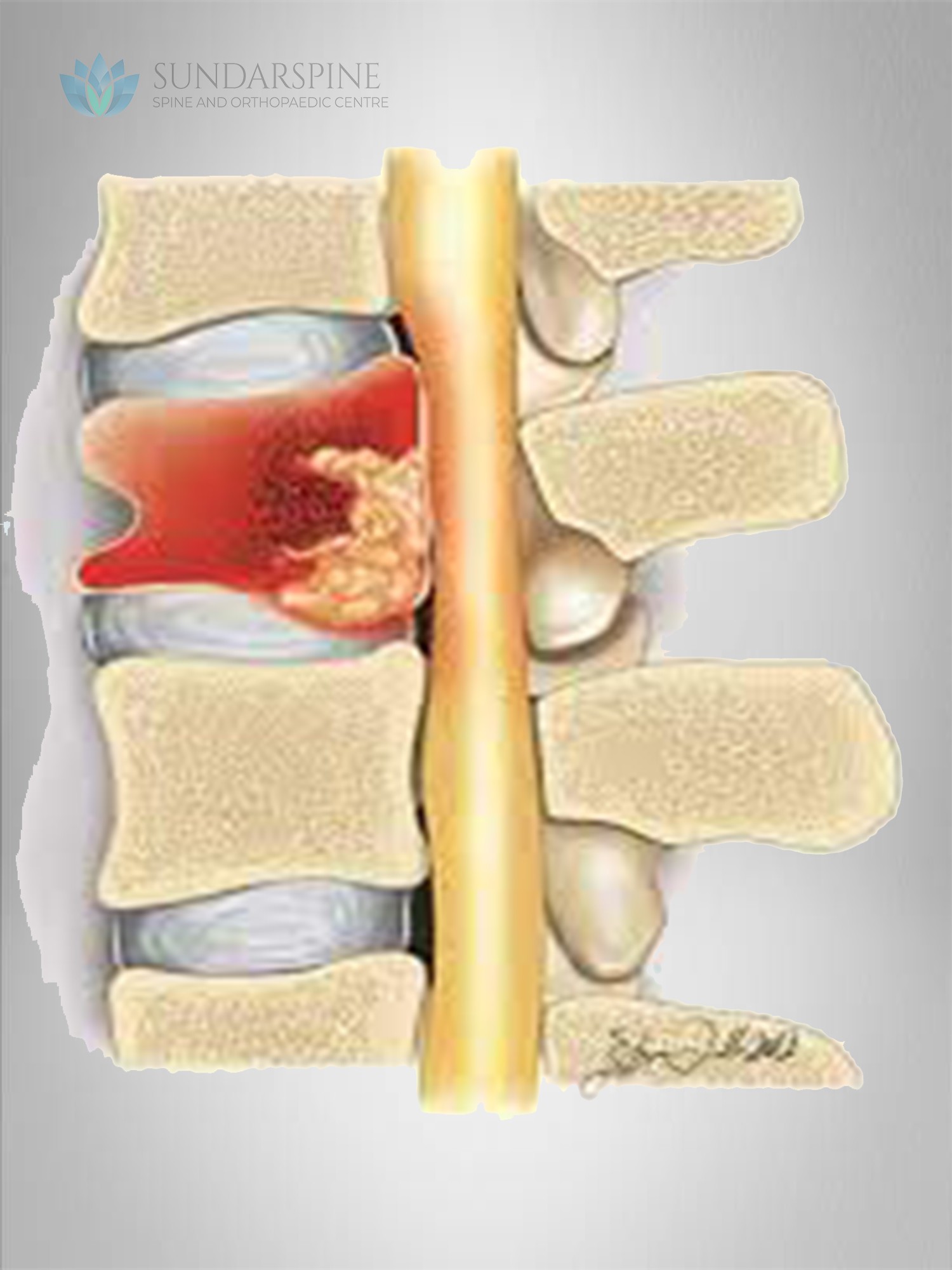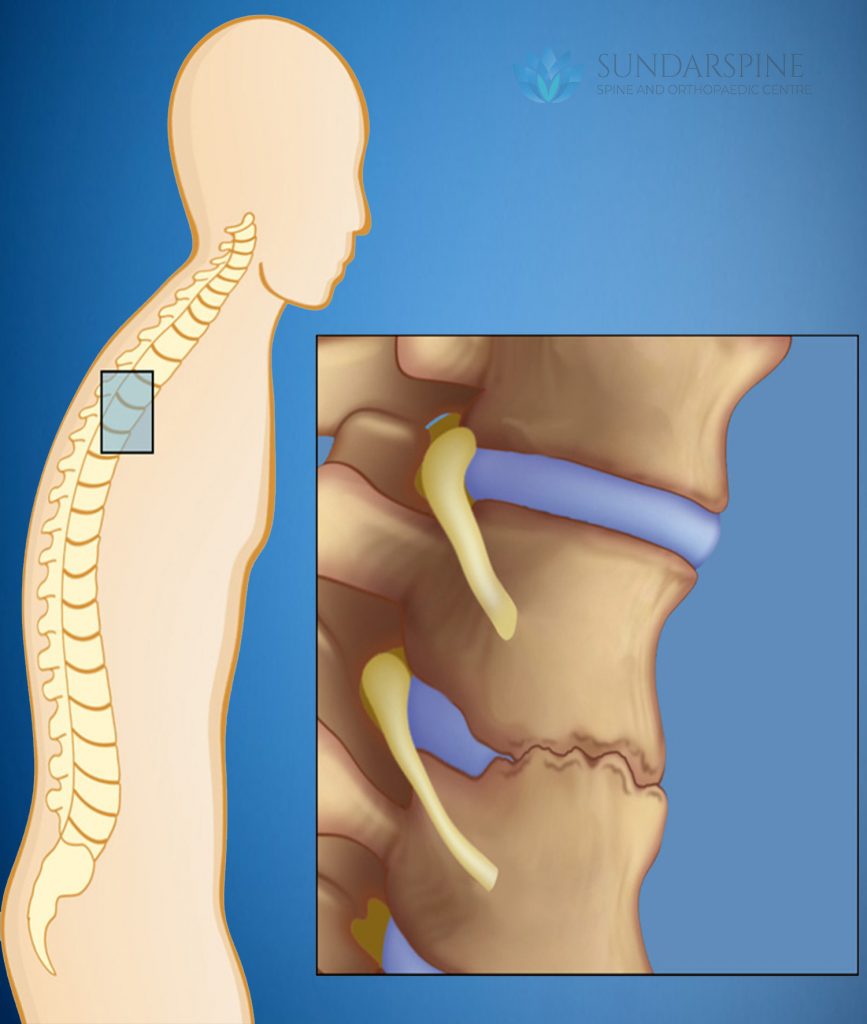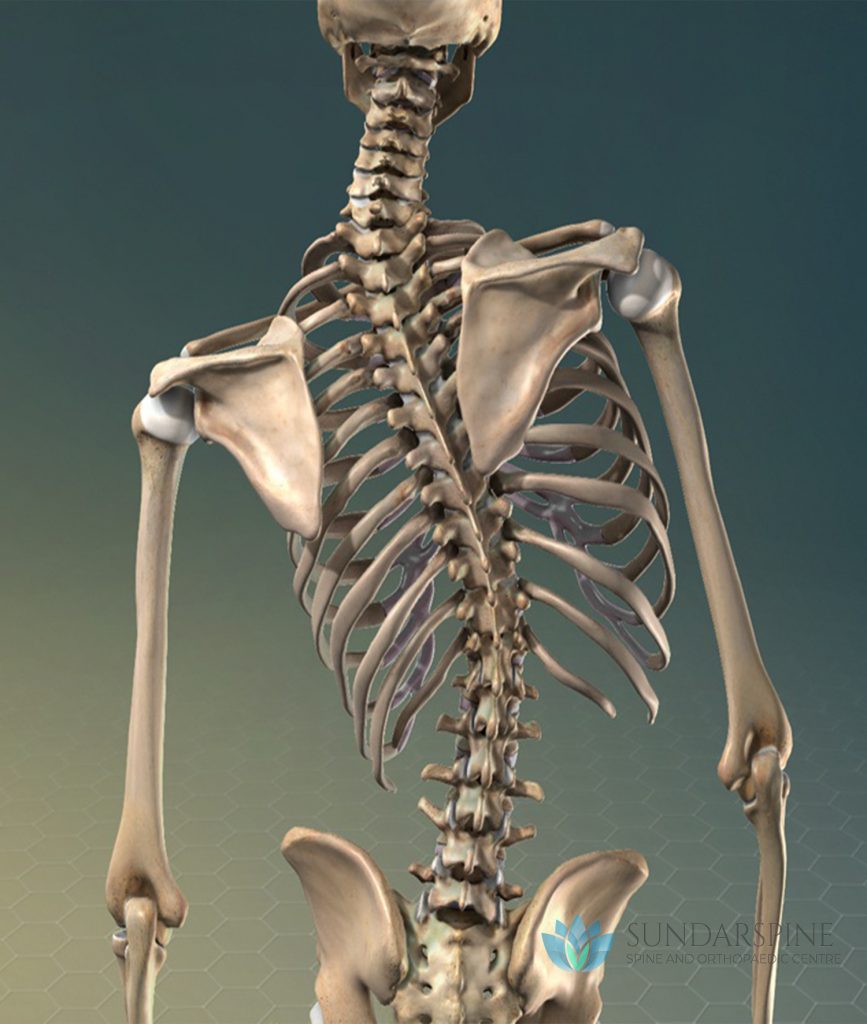Spine Conditions
Spine Infections
Infections of the Spine
Ankylosing Spondylitis
Arthritic stiffness of the spine
Spine Tumours
Tumour / Cancer (Malignancy)
Scoliosis
Curving Spine deformity
Spine Infections

Spinal infections can be classified by the anatomical location involved: the vertebral column, intervertebral disc space, the spinal canal and adjacent soft tissues. Infection may be caused by bacteria or fungal organisms and can occur after surgery.
Tuberculosis is one of the main cause of spine infection in India.
Symptoms: Depends on the location involved – Neck or back pain, stiffness, Fever, chills, weight loss
Risk factor: Diabetes, pulmonary tuberculosis, malnutrition, tumour, long steroid use
Causes: Spinal infections can be caused by either a bacterial or a fungal infection in another part of the body that has been carried into the spine through the bloodstream.
When to see a Doctor: Immediately. Back pain in tuberculosis patient, increasing weakness or numbness.
Treatment: Mainly by medication and rest. Biopsy may be required to confirm the diagnosis or infecting organism. Epidural abscess or Instability risking spinal cord compromise may require surgical intervention.
Ankylosing Spondylosis

Ankylosing spondylitis is an inflammatory disease that, over time, can cause some of the bones in the spine (vertebrae) to fuse. This fusing makes the spine less flexible and can result in a hunched posture. If ribs are affected, it can be difficult to breathe deeply.
There is no complete cure for ankylosing spondylitis, but treatments can lessen symptoms and greatly slow progression of the disease.
Symptoms: Pain and stiffness especially in the early morning. Difficulty in sitting cross legged.
Causes: Ankylosing spondylitis has no known specific cause, though genetic factors seem to be involved. In particular, people who have a gene called HLA-B27 are at a greatly increased risk of developing ankylosing spondylitis.
When to see a doctor: Slow onset back or buttock pain, loss of flexibility, early morning pain, difficulty in sitting cross legged. Better to get diagnosed and start treatment early to reduce severity of the disease. High risk of spine fracture when injured.
Treatment: Managed with medication and exercises. Medication usually has to be taken for long duration. Strictly adhering to the treatment regime may lead to good long term prognosis.
Spine Tumours

Tumors from other parts of the body can spread (metastasize) to the vertebrae, the supporting network around the spinal cord or, in rare cases, the spinal cord itself.
Spinal tumors or growths of any kind can lead to pain, neurological problems and sometimes paralysis. A spinal tumor can be life-threatening and cause permanent disability.
Symptoms:
- Pain at the site of the tumor due to tumor growth
- Back pain, often radiating to other parts of your body
- Feeling less sensitive to pain, heat and cold
- Loss of bowel or bladder function
- Difficulty walking, sometimes leading to falls
- Back pain that’s worse at night
- Loss of sensation or muscle weakness, especially in your arms or legs
Risk factor: Old age, rheumatoid arthritis, injury, neglected cervical disc disease
Causes: Significant compression of the cord caused due to any pathology or condition can cause myelopathy. The blood supple to the cord will be affected and result in irreversible damage unless intervened at the earliest
When to see a Doctor: Persistent and progressive back pain, not activity related, worse at night. History of cancer.
Treatment: Depends on the type of tumour. Usually biopsy may be done to confirm the diagnosis. Spinal cord compression or instability (present or impending) may require surgical intervention
Scoliosis

Scoliosis is a sideways curvature of the spine that most often is diagnosed in adolescents. While scoliosis can occur in people with conditions such as cerebral palsy and muscular dystrophy, the cause of most childhood scoliosis is unknown.
Most cases of scoliosis are mild, but some curves worsen as children grow. Severe scoliosis can be disabling. An especially severe spinal curve can reduce the amount of space within the chest, making it difficult for the lungs to function properly.
Symptoms:
- Visible spine deformity.
- Uneven shoulders, shoulder blade appears more prominent
- Uneven waist. One hip higher than the other
- One side of the rib cage jutting forward
- A prominence on one side of the back when bending forward
Causes: Idiopathic type has no known cause. Other types are mainly due to muscle imbalance, weakness.
When to see a doctor: Better to consult early. Neglecting mild curves may progress to severe deformity requiring major intervention.
Treatment: Mild curves are usually managed conservatively with exercises and braces. Severe curves may require major surgery.
Neck
Neck Spine
Neck Disc Disease
Neck Disc Pathology
Neck Spondylosis
Degenerative Spine / Inflammation
Neck Myelopathy
Spinal Cord Compression
Neck Fracture and Dislocation
Injury to Neck Spine
Low Back
Lumbar Spine
Disc Prolapse
Slipped Disc, Bulging Disc
Spondylolisthesis
Slipped Spine / Vertebra
Lumbar Spondylosis
Degenerative Spine Condition
Spine Fracture
Spine Injury (Trauma or Osteoporosis)
Spine Conditions
Others
Spine Infections
Infections of the Spine
Ankylosing Spondylitis
Arthritic stiffness of the spine
Spine Tumours
Tumour / Cancer (Malignancy) of the spine
Scoliosis
Curving Spine deformity

Our World, Our Vision
We at SUNDARSPINE, believe in our promise to the world to provide Free access Healthcare Education to everyone. This site is a result of years of Planning and Hardwork. We are dedicated to help in your patient experience and aspire to increase our network globally and include a complete database of all health related information and guidance. We have just begun and we have a long way to go. Thank you in being a part of Us!!
We’d love to hear from you
Have any questions, Checkout
Download a FREE Ebook
Subscribe to our news letter
